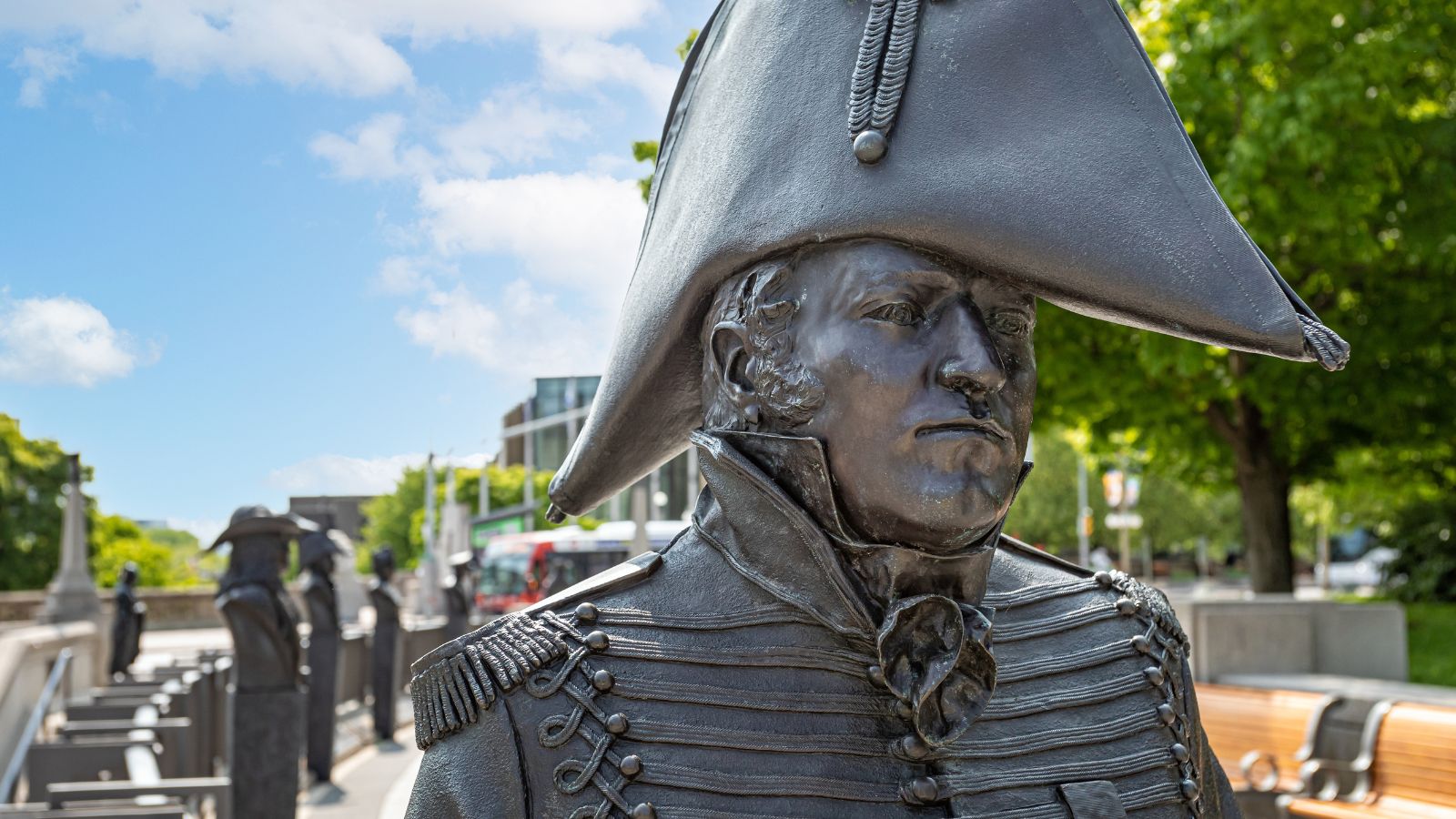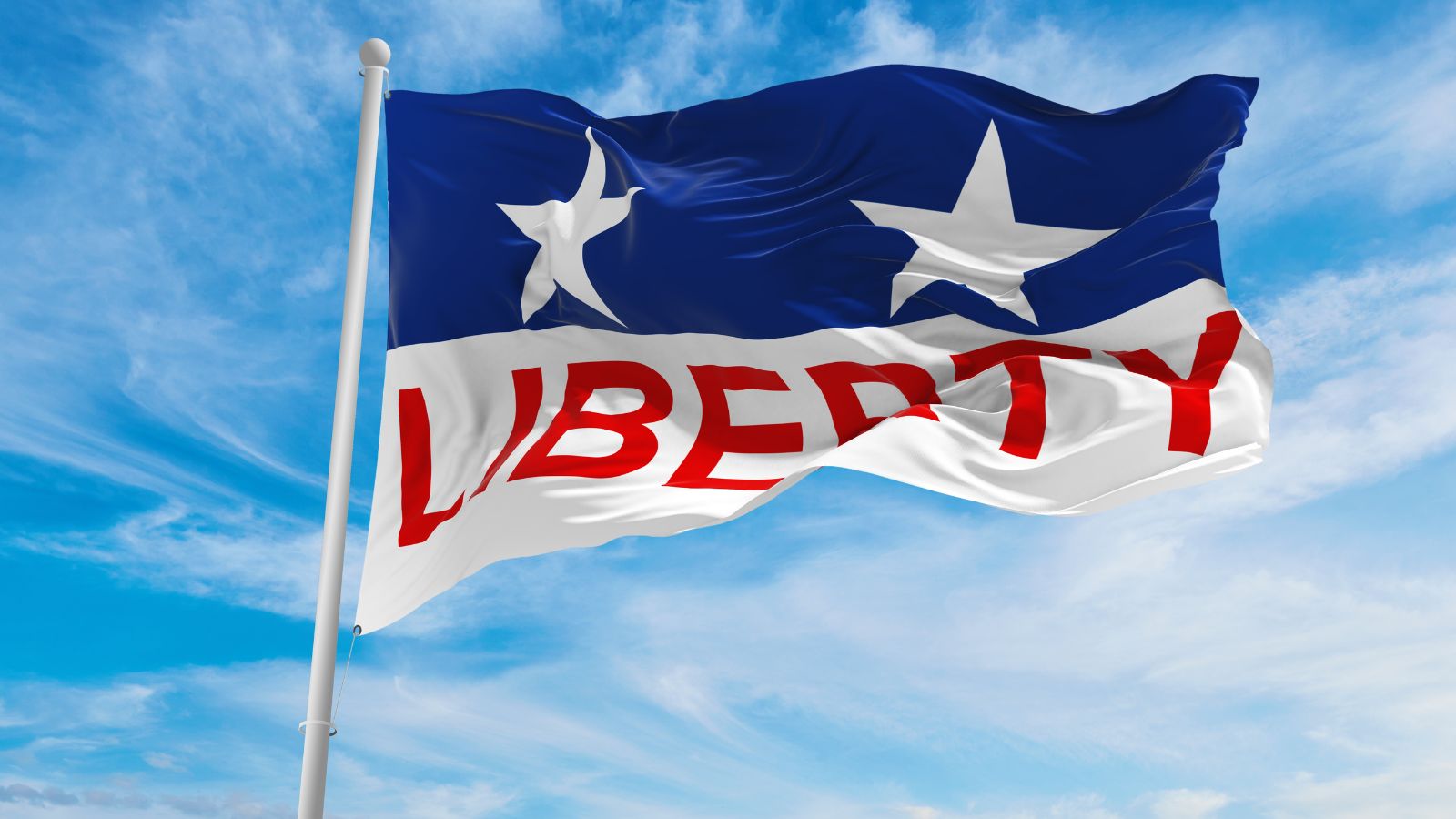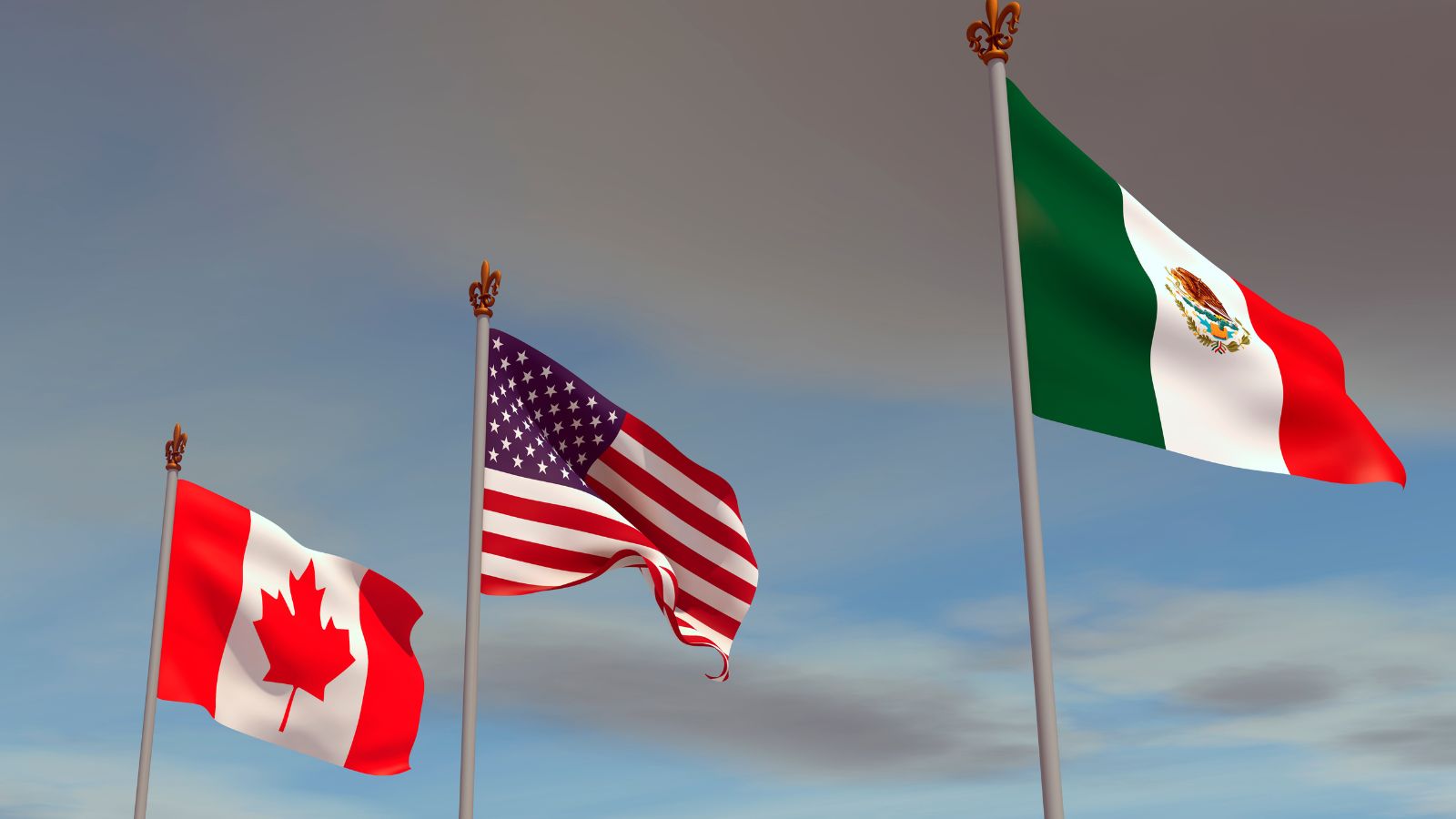Canada’s story is one of strength, determination, and a commitment to building a unique national identity. Despite having the world’s longest unguarded border with the United States, Canada has demonstrated that it can forge its own path in politics, economy, culture, and military affairs.
This article explores 28 important moments highlighting how Canada has maintained its independence.
War of 1812 Victories

In the early 1800s, the United States aimed to expand northward. In response, Canadian militias, often working with Indigenous allies, defended against American invasions during the War of 1812. Key battles like Queenston Heights and Lundy’s Lane stopped U.S. plans and boosted national pride. These military victories showed that a smaller, diverse force could stand up to a larger opponent, setting the stage for Canada’s future independence.
The Battle of Chateauguay (1813)

A significant event in the War of 1812 was the Battle of Chateauguay. Canadian troops used the rough landscape to block a major American advance. This victory was not just a tactical win; it showed that Canada could defend its territory effectively. Canadian forces proved they had the insight and determination to protect their sovereignty by successfully repelling an invasion.
Formation of Confederation (1867)

One of the most transformative moments in Canadian history was the Confederation in 1867. Instead of remaining separate British colonies or falling under U.S. influence, the colonies came together to create a self-governing dominion. This bold move toward nation-building allowed Canadians to form a federal system that reflected their values. By choosing unity and self-determination, Canadians laid the groundwork for an independent nation.
The Rebellions of 1837–1838

Before Confederation, Canada experienced the Rebellions of 1837–1838, driven by discontent with the colonial government and a desire for responsible governance. Though the rebellions did not succeed, they sparked important discussions about representation and governance. This unrest led to reforms that gave Canadians more control over their affairs, marking an early step toward self-rule.
Development of the Canadian Pacific Railway

Building the Canadian Pacific Railway was not just an impressive engineering project; it was also a powerful symbol of national unity. The railway connected the Atlantic and Pacific coasts and supported economic growth. By developing its transportation network, Canada decreased its reliance on U.S. systems and strengthened its internal connections.
The Quiet Revolution (1960s)

The 1960s brought a significant change in Quebec, called the Quiet Revolution. During this time, Quebec’s society shifted away from traditional institutions and embraced modern ideas, asserting its identity. These changes had a profound impact on all of Canada. By adopting a new cultural and political outlook, Quebec—and Canada as a whole—showed that it could evolve independently from American influence, creating a more diverse national identity.
Adoption of Universal Healthcare

Few achievements define modern Canada as clearly as its universal healthcare system. Unlike the United States, where healthcare often depends on the market and private insurance, Canada chose a system based on public funding and equal access for everyone. This policy reflects Canada’s commitment to the welfare of its citizens. Universal healthcare has become a key part of Canadian identity, showing how the country puts its people’s needs first—a choice that reinforces its independent path.
Charter of Rights and Freedoms (1982)

In 1982, the Canadian Charter of Rights and Freedoms was introduced, marking a significant moment in Canada’s legal and political development. The Charter protects fundamental rights such as freedom of expression, equality, and minority rights. This document strengthens Canada’s commitment to fairness and emphasizes its unique legal traditions, separate from those of the U.S. The Charter remains a symbol of Canada’s dedication to democracy and individual rights.
Rejecting Annexation Proposals

Throughout history, Canadians have contemplated becoming the “51st state” of the U.S. However, they have consistently rejected this notion. Canadians believe that their country has a unique identity that should be preserved. This rejection of annexation demonstrates a strong commitment to maintaining their independence.
Successful NAFTA/USMCA Negotiations

Canada’s trade relationship with the U.S. has benefits but also risks dependency. Canada has successfully negotiated trade agreements like NAFTA and USMCA on its terms. Despite facing tough tariff threats from the U.S., Canadian negotiators have secured deals that protect Canada’s interests. This shows that Canada can participate in global trade while maintaining its economic independence.
Stable Banking Through the 2008 Crisis

During the 2008 global financial crisis, many economies struggled, and U.S. banks suffered heavy losses. However, Canada’s financial system remained stable due to conservative lending and strict regulation. This stability highlighted that Canada can protect itself from financial shocks, reinforcing confidence in its independence.
Economic Diversification Efforts

Canadian policymakers recognize the risks of depending too much on one trading partner, mainly the U.S. To address this, Canada aims to diversify its economy by exploring new markets in Europe, Asia, and beyond. Although the U.S. is still Canada’s largest trading partner, these efforts help reduce vulnerability and create new growth opportunities.
Distinct Cultural Exports

Canadian culture has gained recognition around the world, from famous musicians to acclaimed authors and filmmakers. These cultural exports show a society that values creativity and diversity. Canada nurtures a vibrant cultural scene that stands apart from American trends, sharing its unique voice globally.
Embracing Bilingualism and Multiculturalism

Canada is known for its commitment to bilingualism and multiculturalism. By officially recognizing both English and French, Canada celebrates diversity and promotes inclusion. This commitment goes beyond language and shapes a society where different cultural traditions thrive together, in contrast to the more uniform culture often seen in the U.S.
Progressive Social Policies

Canada has been a leader in making progressive changes, like legalizing same-sex marriage and implementing environmentally friendly policies. These efforts reflect Canada’s values of human rights, social justice, and environmental care, setting it apart from the U.S. and reinforcing a distinctive Canadian identity.
International Peacekeeping

For many years, Canada has built a reputation as a peacekeeper around the world. Canadian peacekeepers serve in conflict areas, acting as neutral parties to help resolve tensions. This commitment to peace shows Canada’s dedication to global stability and its preference for diplomatic solutions over military actions.
Asserting Arctic Sovereignty

Recently, Canada has taken steps to assert its control in the Arctic. As climate change opens new shipping routes and uncovers resources, Canada is ensuring it maintains authority in this vital region. By investing in infrastructure and increasing its presence in the North, Canada shows that its national interests extend into these important areas.
Independent Monetary Policy

The Bank of Canada is important for keeping the country’s economy independent. By creating monetary policies that suit Canada’s unique needs, the Bank of Canada helps provide stability and growth without outside influence, especially from the U.S. This independent control over the financial system is key to Canada’s economic sovereignty, enabling the country to handle its challenges.
Strong Democratic Institutions

Canada has a stable and democratic political system. Regular and fair elections, along with a strong parliamentary framework, allow institutions to resist outside pressure and encourage citizen participation. This solid democracy gives Canadians a dependable way to express their opinions and shape national policies. The strength of these institutions supports political independence and serves as a reminder that Canadians determine their future.
Handling Domestic Political Crises

Canada’s history includes moments of internal conflict, like the 1995 Quebec Referendum, which tested national unity. Despite these challenges, Canada has successfully resolved disputes through dialogue and compromise. The ability to handle political crises peacefully shows the maturity of Canadian democracy. By choosing negotiation over conflict, Canada has maintained harmony while following its chosen path, even during critical times.
Investing in National Infrastructure

Investing in infrastructure is essential for Canada’s growth. Projects such as the Trans-Canada Highway and modern public transit systems have improved connections across the country and reduced differences between regions. By building and maintaining strong internal networks, Canada strengthens its economic independence and keeps its regions interconnected. This infrastructure focus demonstrates Canada’s commitment to self-sufficiency and unity rather than relying on outside help.
Leading Environmental Initiatives

In response to climate change, Canada has taken strong steps to protect its natural resources and environment. Policies aimed at cutting carbon emissions, investing in renewable energy, and conserving biodiversity reflect Canada’s commitment to sustainable development. These environmental efforts address Canada’s specific challenges, highlighting an approach independent of U.S. strategies.
Innovating Social Safety Nets

Canada’s social safety net includes child benefits, employment insurance, and public pensions. These programs protect citizens from economic hardships and ensure a basic standard of living for everyone. By investing in solid social policies, Canada shows its dedication to collective well-being and social justice, prioritizing people over profit. This innovation in social policies sets Canada apart from the more fragmented social welfare systems in the U.S.
Addressing Indigenous Rights and Reconciliation

In recent years, Canada has made significant progress in recognizing and addressing historical injustices faced by Indigenous peoples. Efforts include public apologies, policy changes, and initiatives that ensure Indigenous voices are heard. This process of healing and making amends demonstrates Canada’s commitment to justice and fairness—core values in Canada’s identity. By actively including Indigenous perspectives in its national story, Canada reinforces its image as a nation that values inclusivity.
Responding Effectively to Global Crises

During the COVID-19 pandemic, Canada’s response highlighted its ability to solve problems independently. Fast public health measures, coordinated social support, and effective crisis management helped Canada navigate the situation better than many other countries. This successful handling of a global crisis saved lives and built trust in Canadian institutions, showing that Canada can tackle unforeseen challenges.
Celebrating Cultural Resilience in Sports and Media

Sports and cultural events are central to Canadian national pride. From the love of hockey to local festivals and arts, these cultural expressions create a strong sense of community and identity. They remind Canadians of what makes their country unique and foster collective pride that stands apart from the narratives of larger cultures. Through these shared experiences, Canada continues to celebrate its individuality.
Pursuing an Independent Foreign Policy

Canada prioritizes its national interests in international relations instead of merely following the lead of the United States. In matters like trade negotiations, defense issues, and diplomatic relations, Canadian leaders frequently make decisions based on the country’s values and needs. This independent approach to foreign policy demonstrates that Canada can engage with the world while preserving its unique voice, even in the face of external pressures.
Public Sentiment Against Overdependence

Many Canadians are increasingly concerned about relying too much on the United States. This growing public sentiment has led to calls for diversifying trade, strengthening local industries, and protecting cultural identity. Canadians want to be more self-reliant, which has driven reforms to ensure that Canada remains independent for future generations.
Conclusion

These key moments illustrate Canada’s commitment to choosing its own path instead of depending on a more powerful neighbor. Canada’s story shows courage, careful decision-making, and a strong desire to keep its unique identity. These qualities will help guide the country through future challenges and opportunities.
25 Countries Predicted to Become Economic Superpowers in the Next 20 Years

The strength of an economy plays a crucial role in various international policies about trade and relations. Certain factors determine the strength of an economy, including population growth, availability of resources, and development and advancement. Here are 25 countries predicted to become economic superpowers in the next 20 years
25 Countries Predicted to Become Economic Superpowers in the Next 20 Years
